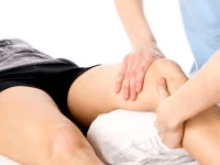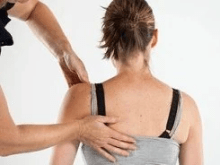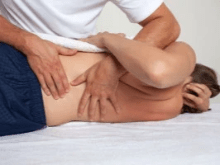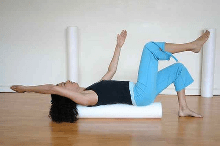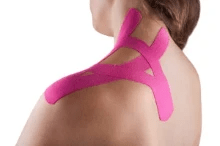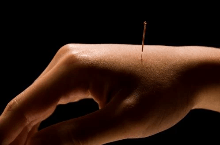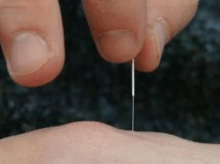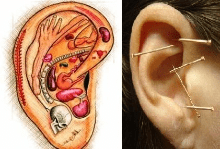

What I can do for you
I have sold my clinic to Top North Sport and Spinal. Bookings can be made by phoning 09 408 0699.
I enjoy my work and like to treat any condition that presents at my clinic. As a client you can expect a 40 minute thorough assessment and evaluation, followed by a discussion of the options most suitable for your condition and an initial treatment. Follow up session times vary from 30 – 40 minutes depending on the condition. I do not claim to be able to cure anyone but will attempt to improve the quality of life and functional ability of anyone who comes to my clinic. For complex or chronic conditions, I usually recommend a course of treatments initially, 3-6 depending on the presentation, at which point I would reassess and either continue if improvement was being achieved or discuss further options or referral to another provider who may be able to help. I also incorporate self-management strategies and stress management in conjunction with the modalities listed. Go to services to view some of the techniques I use for pain management.
My real passion is treating complex pain and chronic conditions. I have done post-graduate study through Otago University in pain management which has broadened my outlook on the complexity of pain. I have also studied Acupuncture for the past 30 years which has been of great benefit for many conditions especially pain management.
About Me
I was born in Waimate, South Canterbury, and spent my childhood with my three siblings on a family farm at Morven. I went to Waimate High School and then on to Otago University and studied Physical Geography and History for 3 years before starting Physiotherapy at Otago Polytechinc. I worked at Waikato and Tauranga Hospitals after graduating and then in private practice in Hamilton. I returned to the South to open a private musculoskeletal clinic in Oamaru, North Otago. Since then I have always worked in private practice, shifting back to Waimate and then to Timaru resulting in 39 years’ experience.
During this time, I have bought up 4 children, helped run a farm, sheep shearing business and was licensee of a child care centre. I have also played many sports including netball, basketball, tennis and swimming and coached all these as well as rugby and cricket. I enjoy reading and studying as well as painting, drawing, gardening and visiting friends and family.
In 2014 I sold a business in Timaru, Active Health Services Ltd, which was a multidisciplinary accredited clinic with multiple sites servicing South Canterbury and employing up to 10 professional staff. Having thoroughly enjoyed the challenges of running a larger business, I am now enjoying the change of pace and the freedom to make choices that suit the direction of my career. I moved to Kerikeri and opened a clinic there in 2015. I soon discovered Coopers Beach was the place I wanted to live so I opened a clinic there in 2017. I bought a section and built my house and purpose built clinic. In November 2024 I shifted my clinic to be next to the Fitness HQ gym in Walters Way Cable Bay. This has given me access to teh gym and the ability to set exercise programs from my doorstep.
Services
Physiotherapy

Mobilisation
Is a hands on movement of joints to stretch ligaments and joint capsules to restore normal movement. Used for any joint condition that has resulted in stiffness and restriction of the gliding movements of the joint. Using mobilisation while the client moves (Mulligan techniques) in certain directions is a very effective way to restore movement within a session. Used on any joint these techniques are particularly useful for sacroiliac joint (SIJ) and temporomandibular joint (TMJ) issues.

Movement patterning
The body is designed to move in certain patterns of least resistance where the alignment is optimal and the muscles can work in the sequence they are supposed to. Due to imbalances, over activity or under activity of certain muscles as well as poor postural patterning the body can develop areas of stress and discomfort which if left uncorrected result in pain and loss of function. This is most common in work related postures, running, sport, manual handing postures as well as sustained positions such as gardening, computer work, watching TV etc. Movement patterning is changing the way we move so we use our muscles and joints in a better sequence. It is exercise based as well as changing some ergonomics. It is very effective and can be quite life changing for those in manual jobs.

Manipulation
Is a form of mobilisation that takes the joint further into the range and typically causes a “popping” sound as air is forced from one side to the joint to the other. This technique is used where joints are stuck and need extra force to make them glide further. I do not manipulate necks and would refer clients to a practitioner skilled in this technique.

Dry Needling
Dry Needling is a form of treatment that uses needles to release tight tissues and trigger points in muscle. It uses acupuncture needles but is not acupuncture.

McKenzie Therapy
A very effective method of treating disc injuries involving exercise and mobilisations to centralise the pain and restore function. This method has been used worldwide for the treatment of spinal issues and requires the client to be very compliant with their exercises and posture.

Exercise Prescription
Appropriate exercises are the most important method of receiving sustained improvement from any treatment. Any exercise given as treatment will be specific and targeted to improve the strength of muscles, the range of joint motion or the intensity of pain felt. The aim is for clients to be able to self-manage any long term issues they may have as a result of injury or everyday life.

Kinesiotaping
A method of taping using a special flexible tape that was designed to mimic the function of skin. It can be used to stimulate or inhibit the strength of a muscle depending on how it is applied. It is therefore very useful for injury rehab and muscle imbalance. Another method of application makes it extremely useful for reducing swelling, bruising and lymphedema. Scar tissue management can be enhanced with Kinesiotape when applied correctly. I also use Kinesiotaping after trigger point work to keep the muscle relaxed and prevent the trigger point reforming. Mechanical alignment using Ktape is very successful for most joints to facilitate correct alignment whilst muscles are strengthening to be able to maintain the alignment long term.
Acupuncture

Western Acupuncture
An evidence based method of acupuncture where needles are inserted into acupuncture points to stimulate the body’s own natural release of chemicals. Studies have recognised over 40 different chemicals that are increased in the system in response to stimulation of acupuncture points. Treatments tend to be between 10-30 minutes depending on the desired effect. It is very effective for acute and chronic musculoskeletal conditions such as joint, muscle or tendon pain and inflammation. The temporomandibular joint often responds well to this type of acupuncture in conjunction with mobilising techniques.

Traditional Chinese Medicine (TCM) Acupuncture
Involves inserting needles into acupuncture points along lines of energy flow (meridians). The aim is to either disperse or enhance the flow of energy (Qi) along the meridian and address the yin/yang balance of the organ attached to the meridian. Treatments can last up to 30 minutes. TCM is useful for treating stubborn musculoskeletal conditions such as arthritis and chronic pain and constitutional disorders like hay fever, menopause symptoms, headaches, menstrual symptoms etc.

Ear Acupuncture
Typically involves using small ball bearing spheres that are taped to points on the ear and left for up to a week. The ears have a representation of the body on them, similar to the feet in reflexology, so pain can be treated by stimulating the points that correspond to the area of pain. Sometimes it is better to use needles to achieve a stronger stimulation and therefore a better release of endorphins from the brain. Ear acupuncture is also used in smoking cessation to help reduce the craving during the first two weeks.

Cupping
A form of stimulation that involves placing cups over the skin and creating a vacuum to suck the tissue up into the cup. It is used over acupuncture points or over areas of scar tissue and thickening to stretch the tissue and enhance blood flow into the area. It is very useful over trigger points in muscles and to stimulate acupuncture points in people who are unable to tolerate needles. The cups can left on for up to 10 minutes or moved over the skin as a form of massage. It is effective for any condition that responds to acupuncture and is particularly useful for scar tissue.

Laser
Used as substitute for needles to stimulate points. It is very useful for people with needle phobia, sensitive people who would have an overreaction to needling and for children. It is also very successful for softening surface scaring. Treatment is painless and very quick lasting about 5 minutes depending on the area being treated.
- Coopers Beach Clinic
Work hours: 8am – 5pm

